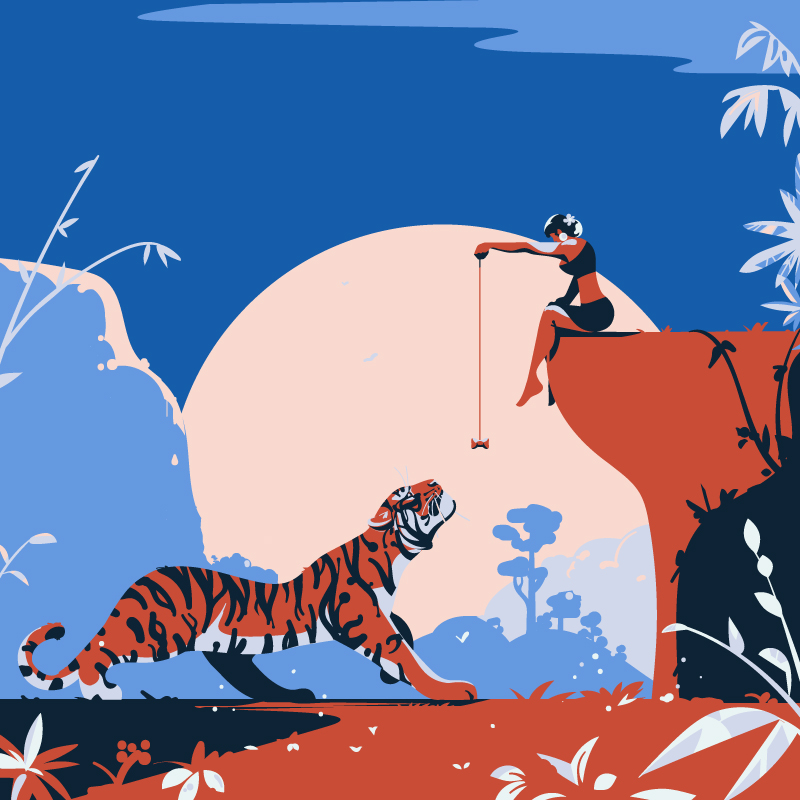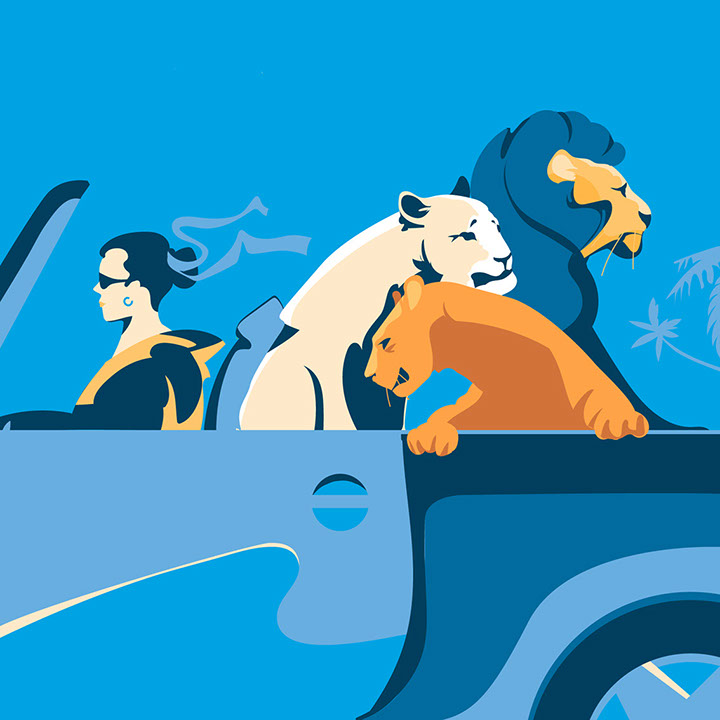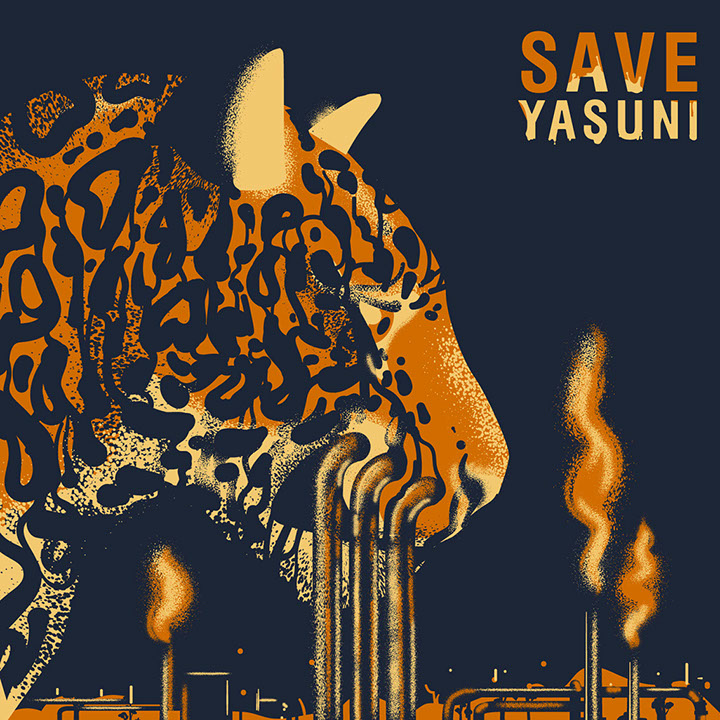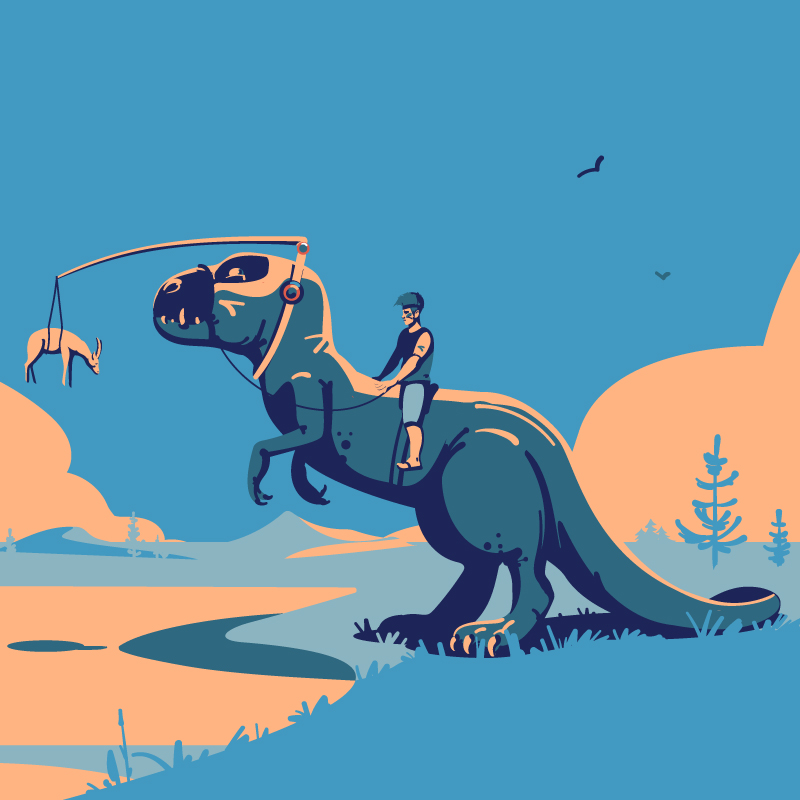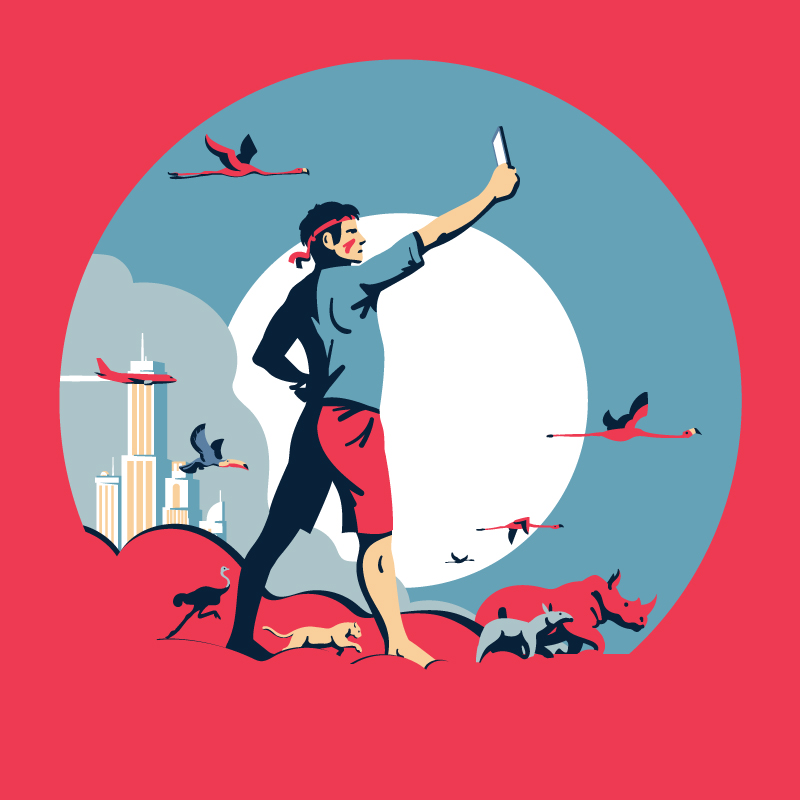Nikolai Senin has done graphic illustration work for some of Russia’s biggest companies, including energy titan Gazprom and Aeroflot, the country’s de facto national airline, but it’s the personal work he shares on his website and Instagram that really caught our attention. Often using nature and wildlife as subjects, the Saint Petersburg-based graphic designer—who also works under the handle Parkol Design—makes clear but non-didactic references to ecology, environmentalism, and issues of conservation. (He started drawing at the age of 2 and grew up illustrating only animals before his interests expanded.) His designs—Wacom- and Photoshop-sketched; finished in Adobe Illustrator—pop with crisp, bold colors; compositional restraint; and a keen sense of perspective.
We chatted with Nikolai about his visual approach; how it corresponds with his other artistic outlets, music and photography; and how Pet Shop Boys have helped teach the masses about tasteful design.
You have a very distinct style. How did you settle in on how you want your work to look?
I have always loved minimalism—clear, clean lines. I’m a graphic artist and I really like it when the illustration doesn’t overflow with a lot of elements and colors. It’s easier to read and faster to read. Sometimes I spend a long time choosing colors. The composition is born in my imagination, then the most important thing for me is the sketch. A pencil has a magic that no program or tablet has; I’ve been convinced of this many times. It’s very important to remain true to yourself, play with space and composition, and experiment.
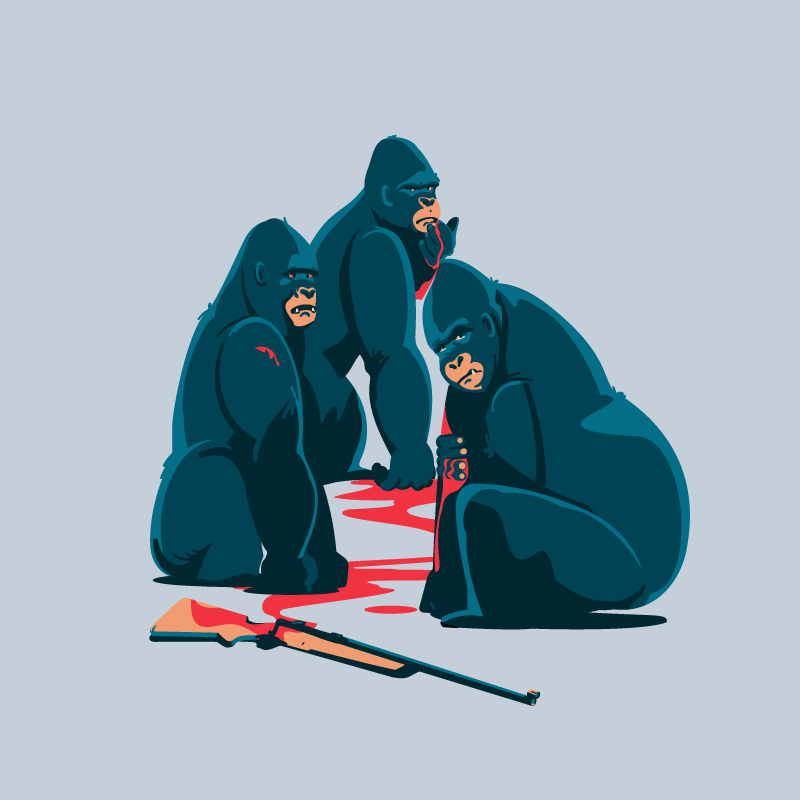
One of Nikolai’s favorites, this design references the killing of gorillas in Congo. COURTESY OF NIKOLAI SENIN.
I noticed a lot of your art is based around predatory animals. Is that something that inspires you?
I like big cats and I’ve loved wildlife since childhood. I like to draw animals—not just predators. I draw a lot of what I see or would like to see.
Not long ago, I visited Yasuni National Park, in Ecuador. It’s a wonderful forest with great biodiversity, but oil has been found there; now the park is in danger. Many animals and plants have been threatened. I made several drawings on this subject to draw attention to the problem. And, yes, drawing big cats is incredibly exciting.
I also noticed several of your more recent works include people and their cell phones. What’s the intended message there, if any?
I’m worried about the narcissism of humanity, how we often ignore the world around us. It’s all about that.
What else inspires you?
Everything that surrounds me inspires me. Music, travel, my city, my family, my friends, and—of course—my wife. I love music and listen to it very often. A long time ago I discovered the British [synth-pop] duo Pet Shop Boys and the Russian band Kino, headed by Viktor Tsoi. These two groups especially inspire me. I have to admit that Pet Shop Boys not only delighted me with their music, but also with their album artwork. They have an amazing graphic designer and, to some extent, the duo have taught their fans good taste. I also listen to a lot of other music: The Cure, Chemical Brothers, Bowie, U2, Daft Punk, Tears for Fears, Beastie Boys, The Verve, Fatboy Slim, R.E.M., and many others. I also write music, and it also inspires me to draw. These are interconnected things.
Also, I’m concerned about ecology and the abundance of plastic in oceans, so I dedicated some of my work to ecology. In my opinion, plastic is the biggest problem on our planet—and the problem is not solved at all.
- Big cats are a recurring subject in Nikolai’s illustrations. COURTESY OF NIKOLAI SENIN.
- Here, Nikolai addresses the oil drilling happening in Ecuador’s biodiverse Yasuni National Park. COURTESY OF NIKOLAI SENIN.
How do you use that inspiration to influence your art?
Sometimes you put on your favorite record and ideas are born. Sometimes inspiration happens not because, but in spite of. This is a strange effect, but it also works. It’s not always possible to realize everything from the first time out, but in your head there’s always a picture that serves as model, and your goal is to convey it as clearly as possible in reality. This applies not only to drawing or design, but also to music. It’s a fantastic feeling when you [manifest] what you intended.
Read more illustration, graphic design, and music stories at Sixtysix,
Tell me a little bit more about your approach to music.
I have a small studio at home, a few hardware synths, and I often sit and invent something. I love to remix and write my own tracks. Art and music have common proportions. And for inspiration, absolutely identical things can serve, although not always.
“It’s very important to remain true to yourself, play with space and composition, and experiment.”
Do you feel like your art and music cross over or are they two separate mediums for you?
They can intersect, but not always. The melody is always important to me, just as the line in my art is important. Melody is a line; it permeates the entire track, composition, and details—arrangement, colors, musical instruments. It’s important to keep the harmony between them.
What about photography? I noticed you have an account with National Geographic‘s “Your Shot.”
My wife and I travel a lot and take lots of pictures. There are some really good shots there. Lonely Planet and the World Wildlife Fund have bought a few photos.
- Nikolai sums it up: ‘Just a guy on the T. rex.’ COURTESY OF NIKOLAI SENIN.
- This one’s about ‘the narcissism of humanity,’ says Nikolai. COURTESY OF NIKOLAI SENIN.
What advice would you give to artists just starting out?
The best advice: Work on yourself constantly. Draw. Make sketches. Analyze the work of other artists. Analyze your mistakes. And, of course, draw what you want to draw, in spite of fashion trends. Fashion sometimes knocks down people who chase after it, and they eventually lose themselves. Do not lie to yourself; be yourself.
What do you hope to do in the future?
I have plans to do several exhibitions, and I want to open my store in the near future. I really would like to work with musicians on the graphic design of CDs and LPs. I have a few offers, so we’ll see. Last year I wrote a song called “Grenki” and I invited my friend Nikolai Tikhonov to sing and play the guitar. The song will be very social-friendly for Russia, and we’ve been shooting a video for it for more than 10 months. The clip should be very funny and will have lots of visual effects. I’ve spent many hours in After Effects.
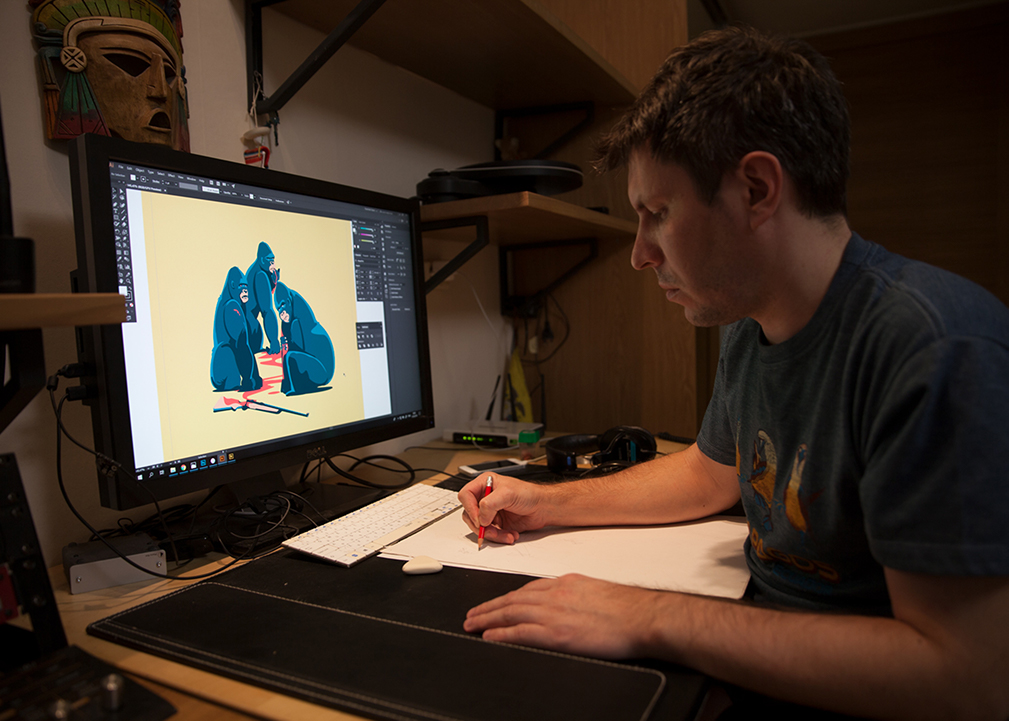
Nikolai at work in his Saint Petersburg studio. COURTESY OF NIKOLAI SENIN.
Edited for clarity.
